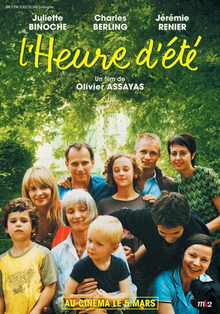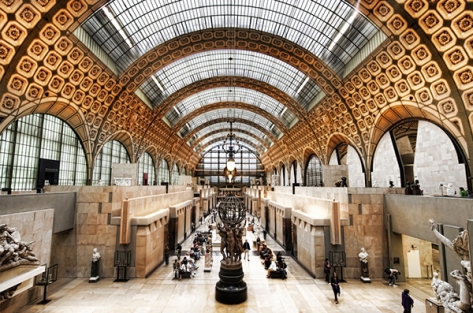There are almost as many movies starring French chateaux as ones starring English countryside manor houses. Written and directed by Olivier Assayas (Irma Vep),“L’heure d’été” (Summer Hours, 2008) focuses on a house with considerable acreage where Paul Berthier, a Pierre Bonnard-like painter, lived and worked. It passed to his favorite niece, Hélène (Edith Scob) whose three children and brood of grandchildren are celebrating Hélène’s 75th birthday.

Designer daughter Adrienne (a blonde Juliette Binoche) has brought the English version of a book on her great-uncle from New York. One son, Jérémie (Jérémie Renier), has come from Shanghai, where he runs a Puma factory. The other, Frédéric (Charles Berling) is a Parisian economist, notorious for a book disclaiming scientific pretensions of economics.
Hélène insists on addressing issues about what will become of the house and her uncle’s art (two Corot paintings, a pair of Redon screens, his own notebooks) and art deco furniture/furnishings. Frédéric does not want to discuss this, certain that the house will remain the same (as when his great-uncle died), that his siblings and their children will continue to return for summers.
Hélène is better aware that the lives of her other two children are elsewhere. She wants Adrienne to have some silver objets d’art, and Frédéric to have the last sketch, but thinks that the furniture and art should go to the Musée d’Orsay. (In fact, they were borrowed from it for the film that was partially sponsored by the museum, along with Hou Hsiao-Hsien’s “Flight of the Red Balloon,” also starring Binoche.)
Hélène dies before the phone system her children gave her is operationalized, and Frédéric is disappointed to learn that he is the only one who doesn’t want to sell the house. He accedes to his siblings’ wishes; there are no dramatic confrontations (contrast “A Christmas Tale” that shares the soulful young Emile Berling). Something of a skeleton comes out of the closet (disbelieved by Frédéric), and the vases that once held flowers around the house are entombed in the d’Orsay. The children have a final party, and at least one of them expresses regret that the children she will someday have will not have the experience of the house and grounds.

Though the movie is primarily about the dispersal of Hélène art nouveau world, I was sorry that Scob (Eyes without a Face) was not around for more of it.
In addition to Francophiles, the movie should interest those (like me) who remember the death of parents and the dispersion of what they owned, even if not of museum quality. Like other Assayas movies (Boarding Gate, Clean), though more gently, globalization is the subtext: the three children live on three different continents as objects that were domestic are gawked at (or, worse, passed by obliviously) in a museum. (There is a certain biting the hand that fed the project.
The cast (especially Isabelle Sadoyan as the aged housekeeper) is splendid, but the objets and grounds are the stars. Eric Gautier (Clean, Into the Wild, Motorcycle Diaries) shoots it all beautifully. Fortunately, Assayas’s veneration of Hou does not extend to chaining down the camera.
©2010, Stephen O. Murray